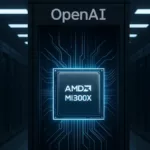The current momentum of blockchain development is facing several critical challenges. These include: (1) slow transaction speed; (2) programming barriers that limit accessibility to highly skilled coders; (3) lack of security; and (4) inflexibility. What may be surprising is that the solution to these technological challenges, may be coming from, of all places, China, which has somehow earned an undeserved reputation as an unrepentant cryptokiller that has brazenly chosen blockchain as its next target.
Nothing could be further from the truth. China has admittedly, and unabashedly, taken a heavy-handed, if not downright hostile approach to cryptocurrencies. But that is only part of the story.
China and Cryptocurrency
China does not recognize cryptocurrencies as legal tender and the banking system is not accepting cryptocurrencies or providing related services. The Chinese government has taken several high profile regulatory measures to protect investors and reduce financial risk, taking on a global leadership role in cryptocurrency regulation. These protective measures include announcing that initial coin offerings are illegal, restricting the primary business of cryptocurrency trading platforms, and discouraging Bitcoin mining.
This has caused much consternation and grumbling among Bitcoin’s disciples, but it has helped many Chinese investors avoid the carnage that impacted most cryptocurrencies during 2018. Bitcoin trading in the Chinese currency, renminbi (RMB), has fallen to less than 1 percent of the world’s total, from a peak of more than 90 percent, according to the People’s Bank of China (PBoC).
China and the Blockchain
However, when it comes to blockchain, China has let its actions speak much louder than words, and it has fully embraced the nascent technology with open arms and open wallets. As noted in a recent Forbes article, the Chinese Communist Party website recently released a primer on blockchain technology that included discussion points on its key features, use cases, and challenges; China’s central bank, the PBoC, is supporting the development of a blockchain-based trade finance platform that will streamline interbank payments and help SMBs get access to a wider range of financing tools; China’s Supreme People’s Court released new rules stating that blockchain technology is an approved method for storing and authenticating digital evidence; and the Bank of China, is planning to aggressively invest in the development of fintech and blockchain technology.
In addition to these recent developments, Chinese firms took 57 spots in a newly compiled “Top-100 Blockchain Enterprise Patent Rankings” list, according to IPRDaily, a global intellectual property information media outlet. China filed the most blockchain patents with the World Intellectual Property Organization (WIPO) in 2017, according to Thomson Reuter’s statistics. China accounted for 49% of filed patents, while the United States came second with 33%. In terms of resources, public and private money is flowing freely to blockchain-related ventures.
Nanjing, the capital of China’s Jiangsu province, has launched a 10 billion yuan ($1.48 billion) investment fund for blockchain. During the grand opening of the Hangzhou Blockchain Industrial Park in China, the Xiong’An Global Blockchain Innovation Fund launched with $1.6 billion (10 billion yuan) to fund promising Chinese blockchain ventures.
By redirecting the country’s enormous technology talent and burgeoning wealth toward tackling the systemic problems facing blockchain development, rather than simply chasing the Bitcoin bubble, China is actually helping to solve them. A powerful mix of private enterprise, the central government, local governments, and academia have been a catalyst for remarkable innovation.
MATRIX AI Network
Take the example of MATRIX AI Network, a global open-source, public, intelligent blockchain-based distributed computing platform and operating system based in Hong Kong.
Since low transaction speed negatively impacts the user experience and impedes mainstream blockchain technology adoption, the MATRIX team created a dynamic delegation network using a distributed clustering algorithm to exchange transaction information and perform Proof of Work (PoW) computations resulting in throughput speeds exceeding 50,000 transactions per second (TPS) in recent tests – many times faster than Bitcoin, Ethereum and EOS and challenging even the transaction computing power of PayPal and Visa.
To improve accessibility and increase adoption of blockchain technology to a wider audience, MATRIX is designing proprietary Intelligent Contracts that leverage natural language programming and adaptive deep learning-based templates to auto-code. The user simply types in the fields he or she wants to include in the smart contract (currently English and Chinese are supported) and the Intelligent Contract does all the coding.
MATRIX’s Intelligent Contract prototype currently supports One-Click Token Launch, One-Click ICO, Voting, Insurance and Auctions. Other functions relating to ownership and management rights, account freeze-and-suspend functions and more are also currently supported.
To improve security, MATRIX added a rule-based semantic and syntactic analysis engine for smart contracts; a formal verification toolkit to prove the security properties of smart contracts; an AI-based detection engine for transaction model identification and security checking; and a deep learning-based platform for dynamic security verification and enhancement.
Looking Ahead to the Future
If Blockchain 3.0 emerges from China, it will represent a seismic shift in the global technology landscape. A faster, more accessible, more secure and more flexible blockchain powered with artificial intelligence has the potential to revolutionize medical diagnosis; finance and credit; gaming; video analytics; digital asset tracking; transportation; image recognition; neuroscience; and decentralized exchange.
About the Author:
Ari Parker is a freelance writer based in New York City specializing in FinTech, small business and entrepreneurship.








